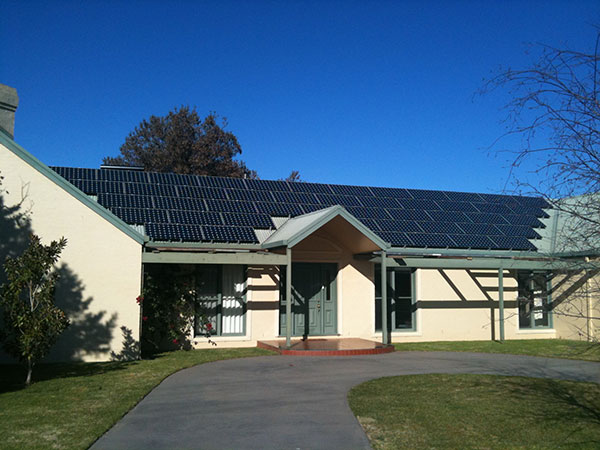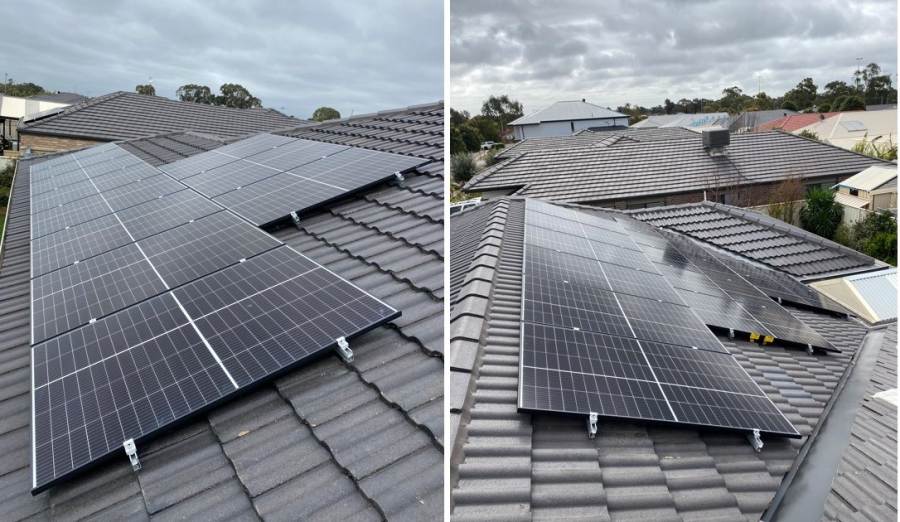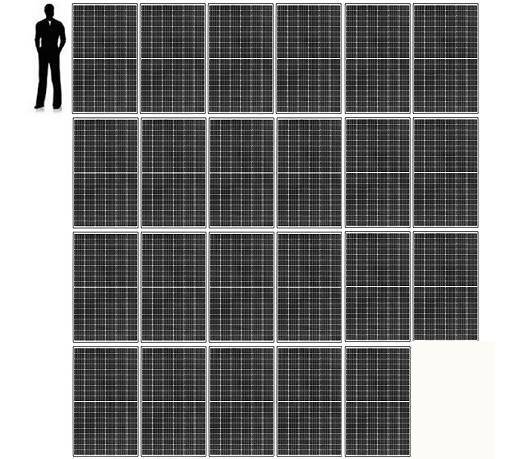10kW Solar System Prices And Information
Last Updated: 7th Jan 2026
If you’re thinking of buying a 10kW solar system in 2026, then you probably have a good-sized roof and significant electricity bill! Or perhaps you have an electric car or are looking ahead to an EV purchase.
A 10kW solar system is about as big as residential systems get, practically speaking. Below is photo of an older 10kW system. There was no space left to waste on this installation! However, note this photo was taken many years ago.

Solar panels installed for 10kW systems in 2026 are significantly more efficient and pack more power into a smaller overall footprint, so not as much roof space is required as it once was. Here’s an example – still 10kW but around half the number of panels; although they are a bit larger in terms of physical dimensions:

24 x 415 Watt panels on 2 roof faces in this 2022 10kW installation.
How many solar panels will you need for 10kW?
To make up a 10kW solar system you need 23 solar panels, assuming you use 440W modules – that will give you 10.12kW.
Each panel will be about 1.8m x 1.1m, so you’ll need at least 48 square metres of roof space.
To provide an idea of how much space that is, this picture may help.

How much electricity will a 10kW solar system generate?
A 10kW solar system will generate approximately 40kWh per day on average – that works out to be 14,600 kilowatt-hours a year. It’s a lot of electricity and enough to run 2-3 average Australian households; or one really inefficient household!
To put it in perspective, 40kWh per day will power:
Approx 2x ducted air conditioning systems on a hot (or cold) day.
OR
4 small pool pumps for 10 hours per day.
OR
40 x 5 star energy rated fridges with the freezer on top or below (not side-by-side; those suckers use a lot more energy).
How much will a 10kW solar system save on electricity bills?
The amount you’ll save on electricity bills with a 10kW system will depend on how much you get paid for exported electricity (solar feed-in tariffs) and how much you self consume.
Feed-in tariffs in Australia generally pay anywhere from 2c to 10c, depending on the state and retailer. Let’s work on 5c per kWh for exported electricity. Most people pay about 33c per kWh to buy electricity from the grid. So let’s consider 3 scenarios to see how the payback works:
- Use all the solar electricity in your (huge) home or business: You would save approximately $4400 in the first year. But 100% self-consumption for a household is unlikely; there will be times when your 10kW system is exporting to the grid.
- Export half the electricity: You would save about $2805 in the first year.
- Export all the electricity: You would save about $824 in the first year.
Moral of the story: The more solar you self consume, the faster your payback.
If you think that this sounds very counter-intuitive, then you can read about the relationship between exports and payback here.
How much does a 10kW solar power system cost in 2025?
You should get about $3,500 in STCs (AKA the solar rebate). So expect to pay about $8,000 – $13,000 out of pocket costs for a good quality 10kW solar system in 2026, professionally installed by a reputable installer.
That’s quite a price range – the reason is the cost of a 10kW solar system will depend on the type of components used. At the upper end of the price range it will be top of the line panels, inverter and racking installed by a particularly fussy installer. At the lower end, you should still get good quality components (but do your research).
Be wary of systems below the bottom end of this price range – there can be a high cost associated with cheap solar in terms of problems down the track.
How long before a 10kW solar power system pays for itself?
Payback will depend on feed-in tariff and self-consumption, but it’s reasonable to expect a 10kW solar system (assuming it’s suitable for your situation) will have paid for itself in around 4.5 years based on 26% self-consumption. After that the electricity is free apart from a small maintenance cost. Expect to pay a few hundred dollars every 5 years for an inspection, and to buy a replacement inverter every 12 – 15 years.
To get a better idea on simple payback for a 10kW solar power system in your circumstances, try my solar calculator.